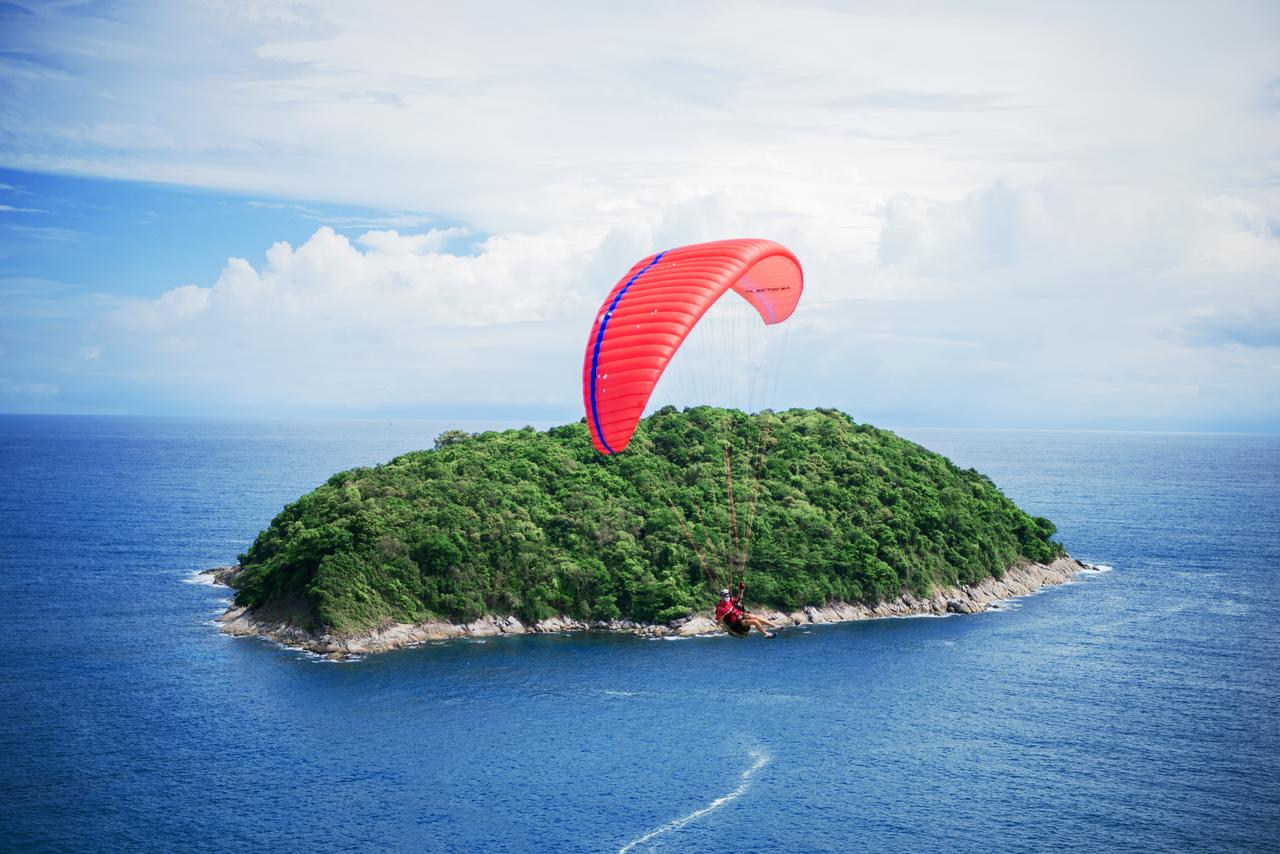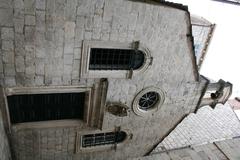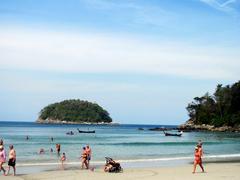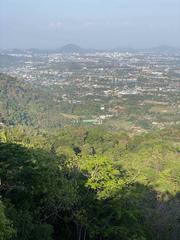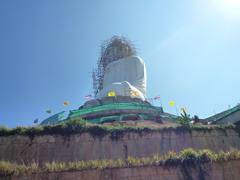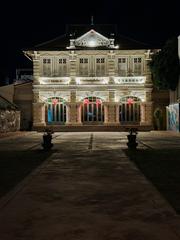Comprehensive Guide to Visiting Phuket, Mueang Phuket, Thailand
Date: 14/08/2024
Captivating Introduction
Welcome to Phuket, an island where every grain of sand tells a story, and every breeze carries whispers of a rich and diverse past. Imagine walking through a place where ancient settlers from the Neolithic era thrived on marine bounty, where traders from India, China, and the Malay Peninsula mingled and left behind a vibrant cultural tapestry (Audiala). From the heroic defense against a Burmese invasion led by two brave sisters in 1785 to the tin mining boom that attracted Chinese immigrants and enriched the island’s cultural landscape, Phuket’s history is as captivating as its pristine beaches (Phuket.net).
The island’s multifaceted identity is also evident in its stunning Sino-Portuguese architecture, a remnant of its colonial past that graces the streets of Old Phuket Town. The tourism boom of the 1970s transformed Phuket into a global hotspot, yet the island strives to balance growth with sustainability, preserving its natural beauty and cultural heritage for future generations (Home in Phuket).
Imagine exploring Wat Chalong, the largest and most visited Buddhist temple on the island, or witnessing the grandeur of The Big Buddha perched on Nakkerd Hill. Whether it’s navigating the emerald waters of Phang Nga Bay or experiencing the vibrant nightlife of Patong Beach, Phuket offers a treasure trove of experiences waiting to be discovered (Nomadasaurus).
Ready to dive deeper? Let this guide be your treasure map, revealing Phuket’s hidden gems, local secrets, and cultural treasures. And trust us, with the Audiala tour guide app, your journey through Phuket will be nothing short of magical.
Table of Contents
- Historical Overview
- Unveiling Ancient Roots and Neolithic Wonders
- A Melting Pot of Early Trade
- Tin Mining and the Chinese Connection
- The Heroic Tale of Thalang
- The Evolution of Phuket’s Name
- The Arrival of Buddhism
- The Architectural Gem of Old Phuket Town
- The Tourism Boom
- Modern-Day Phuket: A Balancing Act
- Hidden Gems and Local Secrets
- Visitor Tips for Exploring Phuket’s Historical Sites
- Myth Busting and Surprises
- FAQs
- Major Attractions
The Enchanting Tapestry of Phuket’s History
Unveiling Ancient Roots and Neolithic Wonders
Imagine stepping back thousands of years to an era where early human communities thrived on the bounty of the sea. That’s the Neolithic era of Phuket for you! Archaeological evidence whispers tales of ancient settlers who made this island their home, drawn by its rich marine resources and strategic location on the trade routes between India and China (Audiala).
A Melting Pot of Early Trade
Phuket’s position on these early trade routes was like a magnet for diverse cultures. Traders from India, China, and the Malay Peninsula mingled with the locals, leaving behind a colorful mosaic of customs and traditions. This multicultural blend laid the groundwork for Phuket’s unique identity, a vibrant tapestry that continues to define the island today (Phuket.net).
Tin Mining and the Chinese Connection
Fast forward to the 19th century, and Phuket was buzzing with the tin mining boom. The island’s rich tin deposits attracted waves of Chinese immigrants, who brought with them their architecture, festivals, and culinary delights. These Straits Chinese left an indelible mark on Phuket’s cultural landscape, enriching it with their heritage (Home in Phuket).
The Heroic Tale of Thalang
In 1785, Phuket faced a Burmese invasion, but the island’s spirit was far from defeated. Two brave sisters, Lady Chan and Lady Muk, rallied the locals and led a successful defense. Their heroism is immortalized in the Heroine’s Monument near Phuket City, a tribute to their enduring legacy (Keller Williams Phuket).
The Evolution of Phuket’s Name
Phuket’s name has undergone several transformations, from “Junk Ceylon” to “Thalang,” and finally to “Phuket,” derived from the Malay word “Bukit,” meaning hill. This change coincided with the administrative center’s move inland, marking a new chapter in the island’s history (Phuket.net).
The Arrival of Buddhism
Theravada Buddhism, introduced by the Srivijaya Empire in the 7th century, became the spiritual heartbeat of Phuket. The island is dotted with temples, the most significant being Wat Chalong, dedicated to monks who played pivotal roles in local rebellions (Phuket Island Guide).
The Architectural Gem of Old Phuket Town
Strolling through Old Phuket Town is like paging through a living history book. The Sino-Portuguese architecture, a remnant of the tin mining boom, graces the streets with its elaborate designs. Thalang and Phang Nga Roads are lined with beautifully preserved buildings, offering a glimpse into Phuket’s colonial past (Home in Phuket).
The Tourism Boom
The 1970s heralded Phuket’s transformation into a global tourist hotspot. The construction of Phuket International Airport opened the floodgates to international visitors, spurring rapid economic growth. However, this boom also brought challenges, including environmental concerns and the need for sustainable development (Phuket.net).
Modern-Day Phuket: A Balancing Act
Today, Phuket is a bustling tourist destination, drawing millions of visitors each year. Efforts are underway to balance growth with sustainability, ensuring the island’s natural beauty and cultural heritage are preserved for future generations. Exploring Phuket’s rich history enhances any visit, making each experience more meaningful (Phuket Island Guide).
Hidden Gems and Local Secrets
Wat Chalong
Wat Chalong, the largest and most visited Buddhist temple in Phuket, is a place of spiritual significance. The temple complex features beautifully landscaped gardens, golden statues, and stunning architecture, making it a must-visit for those interested in Phuket’s religious heritage (Nomadasaurus).
Thalang National Museum
For a deeper dive into Phuket’s past, the Thalang National Museum offers a comprehensive overview of the island’s history. The museum’s exhibits cover various aspects of Phuket’s cultural and historical development, from its early settlements to the tin mining era and beyond (Phuket Island Guide).
Heroine’s Monument
The Heroine’s Monument commemorates the bravery of Lady Chan and Lady Muk, who led the defense against the Burmese invasion in 1785. The monument stands as a symbol of Phuket’s resilience and a tribute to the island’s heroic past (Keller Williams Phuket).
Old Phuket Town
Exploring Old Phuket Town is like stepping back in time. The area is renowned for its well-preserved Sino-Portuguese architecture, vibrant street art, and bustling markets. Key streets to explore include Soi Rommanee and Thalang Road, where visitors can find boutique shops, cafes, and cultural landmarks (Nomadasaurus).
Visitor Tips for Exploring Phuket’s Historical Sites
- Respect Local Customs: When visiting temples and cultural sites, dress modestly and follow local customs. Remove your shoes before entering temples and avoid pointing your feet at religious objects (PhuketOn).
- Hire a Local Guide: To gain a deeper understanding of Phuket’s history and culture, consider hiring a local guide. They can provide valuable insights and enhance your experience (PhuketOn).
- Visit During Festivals: Align your visit with one of Phuket’s vibrant festivals to experience the island’s cultural richness. Notable festivals include the Phuket Old Town Festival, Chinese New Year, and Songkran (Phuket Sail Tours).
- Explore Beyond the Beaches: While Phuket is famous for its stunning beaches, take the time to explore its historical and cultural attractions. This will provide a more well-rounded and enriching travel experience (Nomadasaurus).
Myth Busting and Surprises
- Did You Know?: Despite common belief, Phuket isn’t just about beaches. The island has a rich tapestry of history waiting to be explored!
- Surprising Fact: The name “Phuket” comes from the Malay word “Bukit,” meaning hill – a nod to its landscape and historical significance.
FAQs
Q: What is the best time to visit Phuket? A: The best time to visit Phuket is between November and April when the weather is cool and dry.
Q: Are there any hidden gems in Phuket? A: Absolutely! Beyond the popular spots, explore places like the Baan Teelanka Upside Down House and the quirky Phuket Trickeye Museum.
Call to Action
Ready to dive deeper into Phuket’s enchanting history? Download the Audiala tour guide app for beautifully crafted audio guides that bring the island’s stories to life. Make your journey unforgettable with Audiala – your personal storyteller and guide.
Phuket’s historical journey from a Neolithic settlement to a bustling tourist destination is a testament to its resilience and adaptability. By exploring its rich history and cultural heritage, visitors can gain a deeper appreciation for this captivating island.
Major Attractions in Phuket, Mueang Phuket, Thailand
Wat Chalong
Wat Chalong, formally known as Wat Chaiyathararam, is dedicated to two highly revered monks, Luang Pho Chaem and Luang Pho Chuang, who played significant roles during the tin miners’ rebellion in 1876. Feel the tranquility as you explore the temple complex, open daily from 7 AM to 5 PM, and enjoy free admission.
The Big Buddha
The Great Buddha of Phuket is a colossal statue standing at 45 meters tall on Nakkerd Hill. Made of white Burmese marble, it offers panoramic views of the island. Visit any day from 8 AM to 7:30 PM; no admission fee required.
Phuket Old Town
Phuket Old Town is a historical area showcasing the island’s rich cultural heritage. Explore well-preserved Sino-Portuguese architecture, colorful buildings, and vibrant street art. Don’t miss the Thai Hua Museum and the Sunday Walking Street Market. The area is best explored on foot, and many attractions are free to visit.
Phang Nga Bay
Navigate Phang Nga Bay, home to stunning limestone karsts and emerald-green waters. Explore by boat, kayak, or guided tour, often including stops at Koh Panyi and various caves and lagoons. Tours typically cost around 3,500 THB.
Cape Phromthep
For breathtaking sunset vistas, Cape Phromthep at the southernmost tip of the island is your go-to spot. It’s a popular location for photography and relaxation. Visit the nearby lighthouse for a small maritime museum experience. Open 24/7, and no admission fee required.
Phuket Elephant Sanctuary
The Phuket Elephant Sanctuary is where retired working elephants find a safe haven. Engage with these majestic creatures in their natural habitat. Half-day programs, including a guided tour and opportunities to feed the elephants, cost around 3,000 THB.
Patong Beach
Patong Beach is the island’s epicenter of vibrant nightlife, water sports, and bustling atmosphere. From bars to shops, it’s a hub of tourist activity with plenty of activities like jet skiing and parasailing.
Similan Islands
A pristine destination for snorkeling and diving, the Similan Islands are a protected marine area known for their crystal-clear waters. Open from October 15 to May 15, with an entrance fee of 500 THB.
Bangla Road
Bangla Road in Patong is where the nightlife magic happens after sunset. From bars to clubs, enjoy a variety of experiences, from live music to go-go bars. Stay cautious and aware of your surroundings.
Chalong Bay Rum Distillery
The Chalong Bay Rum Distillery offers a unique experience with guided tours about the rum-making process and tastings. Open Sunday to Friday, 8:30 AM to 5:30 PM, and Saturday from 8 AM to 5:30 PM. Half-day programs cost 3,000 THB.
Gibbon Rehabilitation Center
Dedicated to rescuing and rehabilitating gibbons, this center offers insights into conservation efforts. Visits cost 4,000 THB, and advance booking is required.
Nai Harn Beach
A quieter alternative to Phuket’s crowded beaches, Nai Harn Beach is perfect for swimming and sunbathing. Nearby attractions include Nai Harn Lake and Promthep Cape viewpoint. The beach is free to visit.
Phuket Weekend Market
Experience local culture at the bustling Phuket Weekend Market, also known as Naka Market. Open Saturdays and Sundays from 4 PM to 9 PM, entry is free.
Patong Boxing Stadium
Experience the traditional Thai martial art of Muay Thai at Patong Boxing Stadium. Matches are held regularly, offering an exciting cultural experience. Open Monday to Saturday, 10 AM to 11:30 PM, with tickets costing around 1,890 THB.
Phuket FantaSea
Phuket FantaSea is a cultural theme park offering a spectacular nighttime show combining traditional Thai culture with modern entertainment. Tickets cost around 2,200 THB, and the park is open daily from 5:30 PM to 11:30 PM.
Practical Tips for Visitors
- Best Time to Visit: High tourist season is from November to February. The monsoon season from May to October offers lush greenery with occasional showers.
- Getting Around: Rent a scooter or car for convenience. Taxis and tuk-tuks are available; negotiate fares.
- Safety: Phuket is generally safe, but be cautious, especially at night. Avoid secluded areas and be mindful of personal belongings.
Ready to unlock Phuket’s secrets? Download Audiala, your ultimate travel companion. With expert insights and hidden gems, Audiala turns every stroll into a story. Get the app now and let the adventure begin!
References
- Audiala, 2023, source url
- Phuket.net, 2023, source url
- Home in Phuket, 2023, source url
- Nomadasaurus, 2023, source url
- Keller Williams Phuket, 2023, source url
- Phuket Island Guide, 2023, source url
- TripSavvy, 2023, source url
